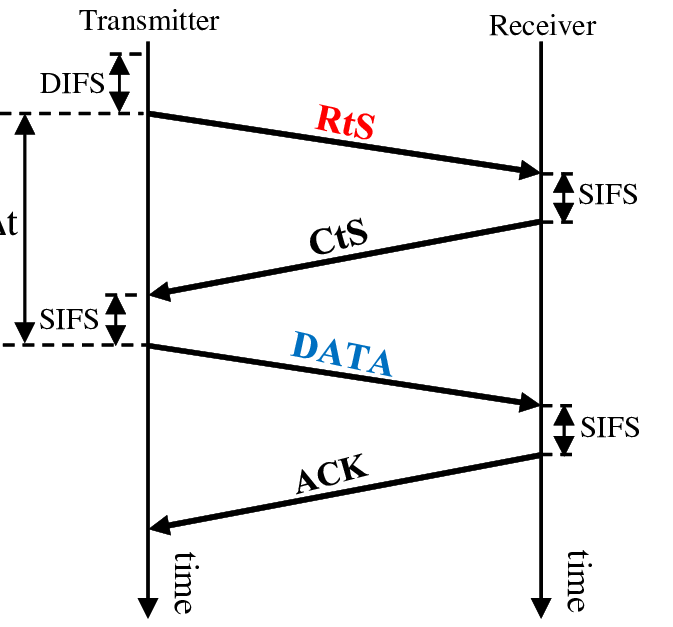Hidden Terminal Problem
Overview
- Hidden Terminal Problem occurs in wireless networks when two devices cannot hear each other’s transmissions but can hear a common third device.
- This situation leads to potential collisions when both devices attempt to communicate with the third device simultaneously, unaware of each other’s presence.
Example Scenario
- Devices A and C are within range of Device B but not each other.
- Device A and Device C might both attempt to send data to Device B at the same time, causing a collision at Device B.
Solution: RTS/CTS Mechanism
RTS/CTS
Request to Send (RTS) / Clear to Send (CTS)
- RTS/CTS is a protocol used to address the hidden terminal problem.
- It involves a two-step handshake to manage access to the shared medium and reduce the risk of collisions.
How It Works
-
Request to Send (RTS):
- When a device wants to transmit data, it first sends an RTS frame to the intended recipient.
- The RTS frame includes information about the duration of the transmission.
-
Clear to Send (CTS):
- The recipient of the RTS frame responds with a CTS frame if the medium is clear.
- The CTS frame notifies all other devices in the range of the recipient that the channel is reserved for the transmission.
-
Transmission:
- Once the RTS/CTS exchange is complete, the sender transmits its data.
-
Network Awareness:
- Other devices that receive the CTS frame will defer their transmissions to avoid collisions.
Benefits
- Collision Avoidance: Helps prevent collisions by ensuring that all devices are aware of ongoing transmissions.
- Efficient Use of Medium: Improves overall network efficiency by managing access to the shared medium.
Summary
- The Hidden Terminal Problem can cause collisions in wireless networks when devices cannot detect each other’s transmissions.
- The RTS/CTS Mechanism is a solution that helps manage access to the medium and prevent such collisions through a handshake process.
